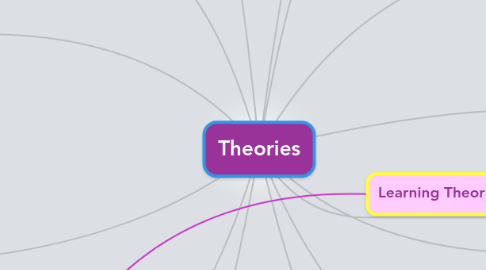Theories
저자: Kevin Dabbs

1. SCOT
1.1. Social Construction of Technology
1.2. Human action shapes technology
1.3. Humans manipulating technology
2. Media Ecology
2.1. Complex Communication systems as environmnts
2.2. What roles do media force us to play?
2.3. Technology manipulating humans
3. Technology Theories
4. TPACK
4.1. 3 types of Knowledge
4.1.1. Content Knowledge
4.1.2. Pedagogy Knowledge
4.1.3. Technology Knowledge
4.2. TK recently added to CK and PK
4.3. all three K's come together to create "magic centre"
4.4. Find the mystic balance between all three K's!
5. Philosophy of Teachnology
5.1. Wanna get a job? Have this at the ready.
5.2. What are your beliefs regarding technology in the classroom?
5.3. Your students' success depends on this
5.4. 2 philosophies: teaching, and teachnology
6. Connectivism
6.1. The pipe is more important than the content within the pipe!
6.2. It's not about how much you know, it's about where to find it!
7. Behaviourism
7.1. Ring ring! Drool.
7.2. Drill Drill Drill!
7.3. Stimulus-response (repeat)
7.4. Operant conditioning (reinforce)
7.5. Direct instruction, worksheets
7.6. Tech example: Mathblasters
8. Learning Theories
9. Cognitivism
9.1. Response to Behaviourism
9.2. Prior knowledge key to new learning!
9.3. Schema/scaffolding
9.4. Working memory-processor!
9.5. Long-term memory-storage!
9.6. Tech example: Databases
10. Behaviourism? But...
10.1. The mind is not a blank slate
10.2. Learning not always tied to behaviours
10.3. Rewards/punishments not necessary
11. Cognitive Load Theory
11.1. Processing info can underload!
11.2. Processing info can overload!
12. Cognitivism? But...
12.1. What about affective and psychomotor?
12.2. Too focussed on knowledge.
13. Constructivism
13.1. Constructing one's own knowledge from one's own experiences
13.2. Project-based...Authentic Tasks
13.3. Begin with complex problems, teach basic skills on the way to solving those problems
13.4. Tech example: Google Sites
14. Constructivism? But...
14.1. Time-consuming
14.2. Subjective learning
14.3. Difficult to assess


